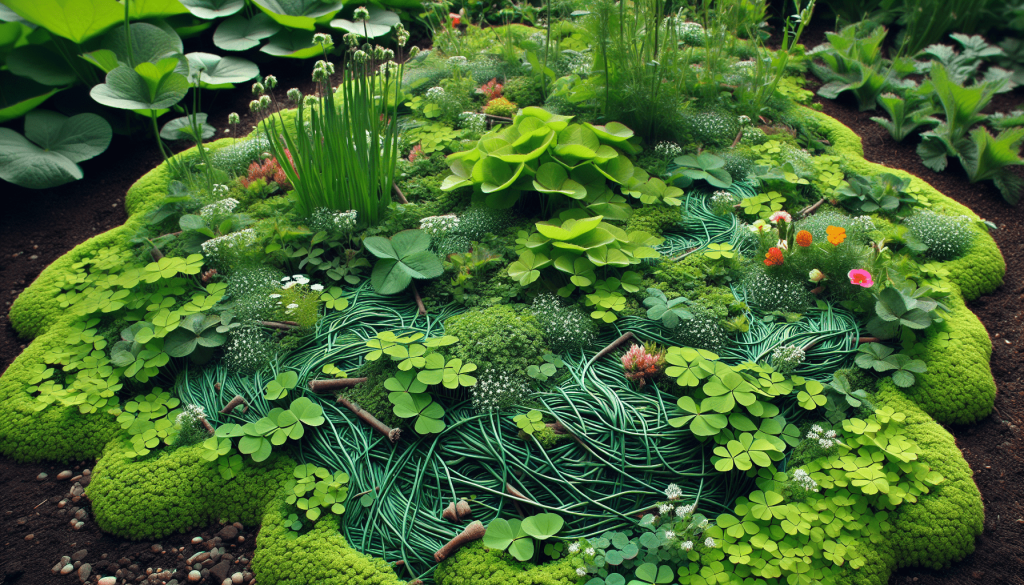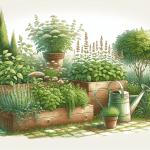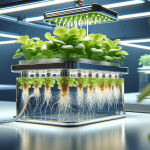This post may contain affiliate links. As an Amazon Associate, we may earn commissions from qualifying purchases.
Have you ever wondered how you can enhance your garden while saving time, reducing effort, and nurturing the environment? It might sound like a garden fantasy, but the solution is much more practical and straightforward than you might think. Welcome to the intriguing world of living mulch, a gardening technique that is redefining conventional garden practices.
Living mulch can transform how you care for your plants and the earth they grow in. Imagine a covering that not only protects your garden but also enriches it—an old-fashioned idea with modern appeal which could change the way you engage with your outdoor spaces. This approach offers a variety of benefits that speak to both your practical needs and your environmental sensibilities.

What is Living Mulch?
Before diving into the benefits, let’s clarify what living mulch actually is. Living mulch refers to the practice of planting cover crops that grow in and around your main crops. These plants act as a living protective layer, similar in function to traditional mulch, but with added benefits courtesy of their living, breathing existence.
This innovative method involves planting certain types of ground cover plants that establish an eco-friendly and thriving garden ecosystem. Unlike regular mulch, which can be made of inorganic or organic material like bark, straw, or plastic sheeting, living mulch is composed of plants that grow symbiotically with your garden beds.
Types of Living Mulch
Choosing the right plants to use as living mulch is key to reaping its benefits. These plants are typically low-growing, spreading easily while providing dense coverage. Here’s a quick look at some popular choices:
| Plant Type | Characteristics | Suitability |
|---|---|---|
| Clover | Nitrogen-fixing, low-growing | Vegetable gardens |
| Thyme | Aromatic, drought-resistant | Herb and flower borders |
| Vetch | Nitrogen-fixing, vigorous | Large garden plots |
| Alfalfa | Deep-rooting, nitrogen-fixing | Agroforestry applications |
| Buckwheat | Weed-suppressing, fast-growing | Temporary cover in rotations |
By strategically selecting the best plants as living mulch, you’ll enhance both the aesthetic appeal and the functionality of your garden.
Benefits of Living Mulch
Now let’s dive into the advantages of integrating this phenomenal tactic into your gardening routine. Living mulch can serve as a multitasking garden helper, providing various benefits that can save time, improve plant health, and contribute to an environmentally sustainable approach.
Improved Soil Health
Living mulch enriches your soil continuously. Some plants, like clover and vetch, are nitrogen-fixers, meaning they naturally capture nitrogen from the atmosphere and convert it into a form that your plants can use. This boosts soil fertility without the need for synthetic fertilizers.
These plants also play a crucial role in maintaining soil structure. As their roots grow, they form channels that improve water penetration and reduce soil compaction. The result is a more robust and resilient garden infrastructure.
Natural Weed Suppression
One of the most frustrating and labor-intensive aspects of gardening is the persistent battle against weeds. Living mulch provides a natural solution. By covering bare ground, these mulch plants help suppress weed germination and growth. The thick foliage blocks sunlight, making it difficult for weeds to thrive and compete with your main crops. This means less time pulling pesky weeds and more time enjoying your garden.
Erosion Control
If you’ve ever dealt with erosion in your garden, you’ll appreciate this benefit of living mulch. The root systems of these plants create a network that holds the soil together, significantly reducing erosion caused by wind and rain. This natural solution to controlling soil erosion protects your plants’ roots and ensures a healthy growing environment.
Moisture Retention
Water scarcity is an increasing concern in many areas, so moisture retention is a top priority for gardeners. Living mulch helps by forming a protective layer over the soil, reducing evaporation and allowing the soil to retain moisture longer. This means less time spent watering and a reduced water bill, not to mention a more sustainable approach to gardening.
Pest Management Assistance
Certain living mulches can also aid in pest control. Aromatic plants like thyme can deter pests through their scents, while the presence of diverse plant species can attract beneficial insects, such as ladybugs and predatory beetles, which naturally keep pest populations in check. This leads to a balanced ecosystem where nature does the heavy lifting.
Biodiversity Promotion
Gardens with a rich mix of plant species are often more resilient to environmental stressors. Living mulch introduces additional plant species to your garden, thereby increasing its biodiversity. This richer ecosystem can provide numerous benefits, from stabilizing plant communities through symbiotic relationships to offering habitats for various forms of wildlife.
Cost Efficiency
Once established, living mulch is essentially a self-sustaining system. It can reduce or eliminate the need for costly fertilizers, weed killers, and pest control measures. Moreover, the improved soil health and water retention can reduce your investment in supplementary resources. In this way, living mulch promotes a cost-effective approach to gardening.
How to Implement Living Mulch in Your Garden
Intrigued by the potential benefits and ready to give living mulch a go? Here’s a simple guide to getting started:
Selecting the Right Plants
Choosing the right living mulch plants is key. Consider the type of crop you’re growing, local environmental conditions, and the particular traits of each mulch plant. Reflect on whether your chosen living mulch can cohabit peacefully with your main crops and provide the expected benefits.
Timing Your Planting
Planting too early or too late can inhibit living mulch effectiveness. Typically, gardeners aim to sow living mulch crops at the same time as or slightly after the main crops are planted. This avoids undue competition during the crucial early growth stages of your primary plants and ensures that your living mulch establishes efficiently.
Managing Your Living Mulch
Living mulch requires some maintenance to ensure it doesn’t overrun your main crops. You may need to prune back or manage the cover crops manually to keep a balance. However, while it may seem counterintuitive, letting living mulch bloom or seed can sometimes enrich the rest of your garden area naturally.

Potential Challenges and Considerations
While living mulch is beneficial, it’s not without its challenges. It’s important to recognize potential issues and plan accordingly.
Competition for Resources
Living mulch and your main crops may compete for water, light, and nutrients, particularly if not properly managed. It’s essential to select plants with compatible growth habits and nutrient needs.
Pest and Disease Risks
Although living mulch can deter pests, it can also harbor them or encourage specific pests if not monitored regularly. A balanced approach involves ongoing vigilance and management to prevent infestations.
Initial Investment of Time
Starting with living mulch might require additional time and effort to establish properly. Yet, the benefits often outweigh the initial investment, rewarding you with a healthier and more manageable garden over time.
Exploring Further
If you find yourself captivated by the idea of living mulch, consider researching specific plant combinations suited to your garden’s needs. You can also participate in local gardening groups or forums where enthusiasts exchange ideas and experiences. Extending your knowledge through these avenues will provide insights that refine your unique approach to living mulch.
Conclusion
Living mulch stands as a guardian of sustainable gardening, a technique that bonds the aesthetic beauty of your garden with practicality and ecological mindfulness. By incorporating it into your gardening practice, you not only help your plants flourish but also contribute positively to the environment. The holistic advantages extend beyond mere visual appeal, offering a gardening approach that is both innovative and deeply rooted in nature’s own processes. Embracing living mulch allows you to cultivate a rich, balanced garden and, along the way, reaffirm the symbiotic relationship you share with the earth.








